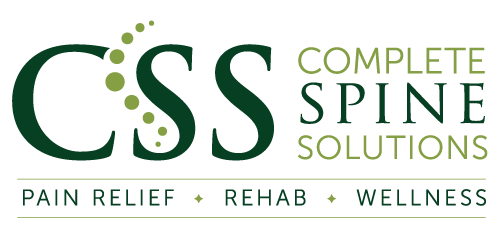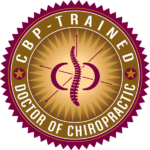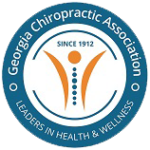
Migraines are a common and often debilitating form of headaches that affect many people, including children. These severe headaches can disrupt daily life and cause a range of uncomfortable symptoms. In this article, we will explore what migraines are, their symptoms, their causes, and the various treatments available.
Additionally, we will delve into chiropractic care as an alternative approach to managing migraines, highlighting its effectiveness and safety.
How Common are Migraines?
Migraines are more prevalent than you might think. Studies show that about 1 in 10 children and adolescents experience migraines, with the condition being more common in girls than boys. Migraines can also persist into adulthood, affecting millions of people worldwide.
What are the Symptoms of Migraines?
The symptoms of migraines can vary from person to person, but common signs include:
- Throbbing or pulsating headache
- Sensitivity to light and sound
- Nausea and vomiting
- Dizziness or lightheadedness
- Visual disturbances, such as seeing flashing lights or zigzag lines
What are the Causes of Migraines?
While the exact causes of migraines are not fully understood, researchers believe that genetics, spinal structural abnormalities, and environmental factors play a significant role. Triggers such as stress, certain foods, hormonal changes, and lack of sleep can also lead to migraine attacks.
What are the Treatments for Migraines?
There are medical treatment options available to manage migraines, ranging from over-the-counter pain relievers to prescription medications.
Lifestyle changes, such as maintaining a regular sleep schedule, managing stress, and avoiding triggers, can also be helpful in reducing the frequency and severity of migraines.
How Does Chiropractic Care Work for Migraines?
Chiropractors work on the spine. Since structure affects function in every aspect of life, it is not unusual to see migraine sufferers who have spinal structural abnormalities that deviate from proper spinal structure. Improving a compromised spinal structure towards a more normal, stable position can often be a game-changer for migraine sufferers.
Chiropractic care for migraines involves gentle adjustments to the spine to correct misalignments, known as subluxations. These misalignments can cause nerve interference, which can contribute to migraines. By realigning the spine, chiropractors aim to alleviate nerve pressure and restore proper nervous system function.
In addition to spinal adjustments, chiropractors may use other therapeutic techniques such as heat or cold therapy, and exercises to help alleviate muscle tension and improve overall spinal health. These additional therapies can complement the chiropractic adjustments and contribute to better migraine management.
What is the Evidence for the Effectiveness of Chiropractic Care for Migraines?
The evidence for chiropractic care’s effectiveness in managing migraines is promising. While more research is needed, many migraine sufferers report reduced frequency and reduced intensity of headaches after receiving chiropractic treatments.
A study published in the Journal of Manipulative and Physiological Therapeutics reviewed several clinical trials and found that chiropractic care, particularly spinal manipulative therapy, can be beneficial in reducing the frequency and duration of migraines. The study also noted that chiropractic care is generally well-tolerated, making it a viable option for migraine sufferers who may be seeking a non-pharmaceutical approach.
A review published in the Journal of Headache and Pain in 2011 concluded that spinal manipulation and chiropractic care can be considered effective treatment options for migraine and cervicogenic headaches, which are headaches originating from the neck.
While these studies provide promising evidence, it is essential to remember that individual responses to treatments can vary.
Is Chiropractic Care Safe for People with Migraines?
Chiropractic care is generally safe for people with migraines, especially when performed by a licensed and experienced chiropractor. It is a non-invasive and drug-free option, making it an appealing choice for those seeking natural remedies for migraine relief.
However, like any medical or therapeutic intervention, there are certain considerations and precautions to be aware of. For instance, individuals with certain pre-existing conditions, such as cervical instability, vascular disorders, or uncontrolled hypertension, may not be suitable candidates for certain types of manual manipulation. However, there are other chiropractic treatment options available.
Conclusion
In conclusion, migraines can be a challenging and distressing condition for many individuals, including children. Understanding the symptoms, causes, and available treatments is crucial for effectively managing this condition. Chiropractic care offers a safe and effective alternative for migraine relief, providing patients with a drug-free and non-invasive approach to improving their quality of life.
By focusing on realigning the spine and restoring proper nervous system function, chiropractic care aims to alleviate nerve pressure and promote natural healing within the body. Numerous migraine sufferers have reported positive outcomes and enhanced quality of life through chiropractic treatments.
For individuals considering chiropractic care for migraines, it is essential to consult with a qualified chiropractor experienced in treating headaches and migraines for the best possible outcome.
Overall, chiropractic care provides a promising avenue for those seeking safe and effective migraine management without resorting to pharmaceutical interventions. By empowering yourself with knowledge about migraines and exploring non-invasive, low-risk treatment options, you can take proactive steps towards improving your well-being and finding relief from this debilitating condition.
References:
About the Author

Dr. David Shapiro, DC, CEO of Complete Spine Solutions
A graduate of Life University, School of Chiropractic 1993 (4600 postgraduate hours). Board-certified licensed Doctor of Chiropractic. Passed 3 national board tests and the state of Georgia board examination. Also certified in therapeutic modalities.
Advanced Certified in Chiropractic BioPhysics, the most evidence-based technique in chiropractic. He’s been in private practice for over 25 years.



